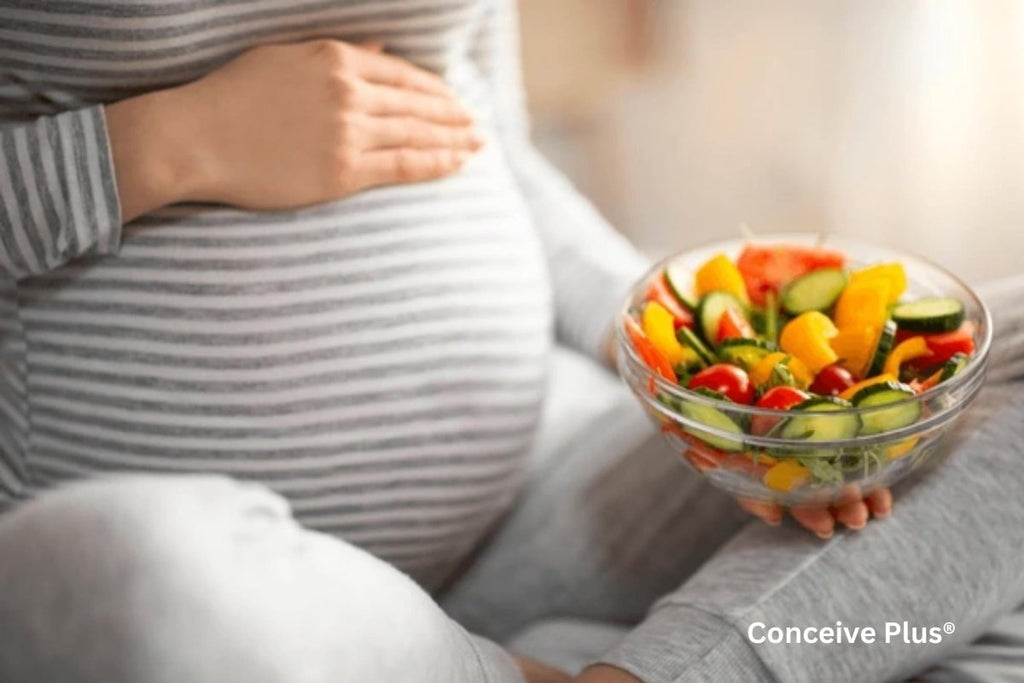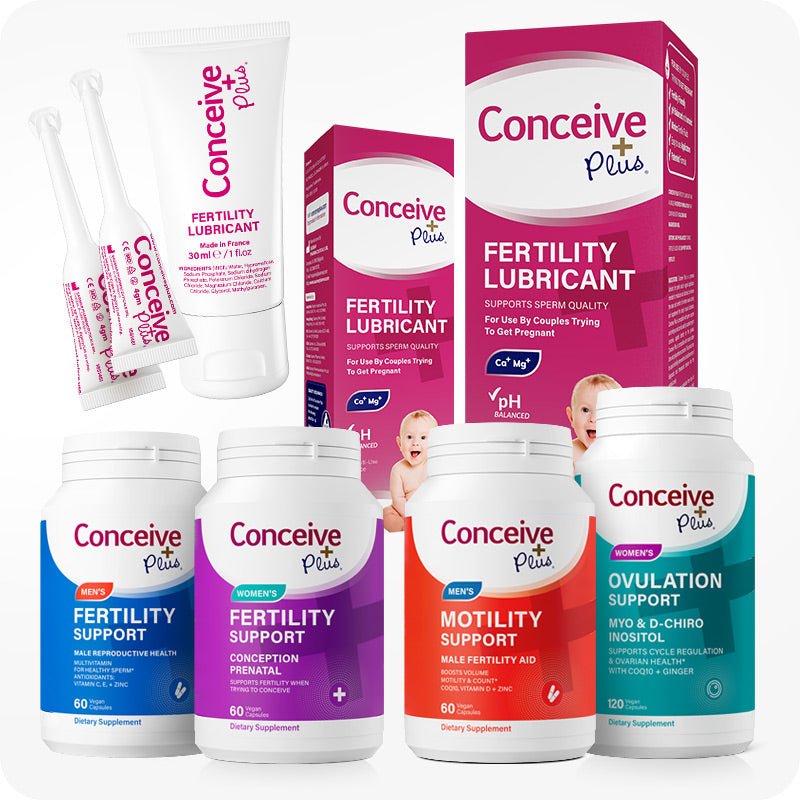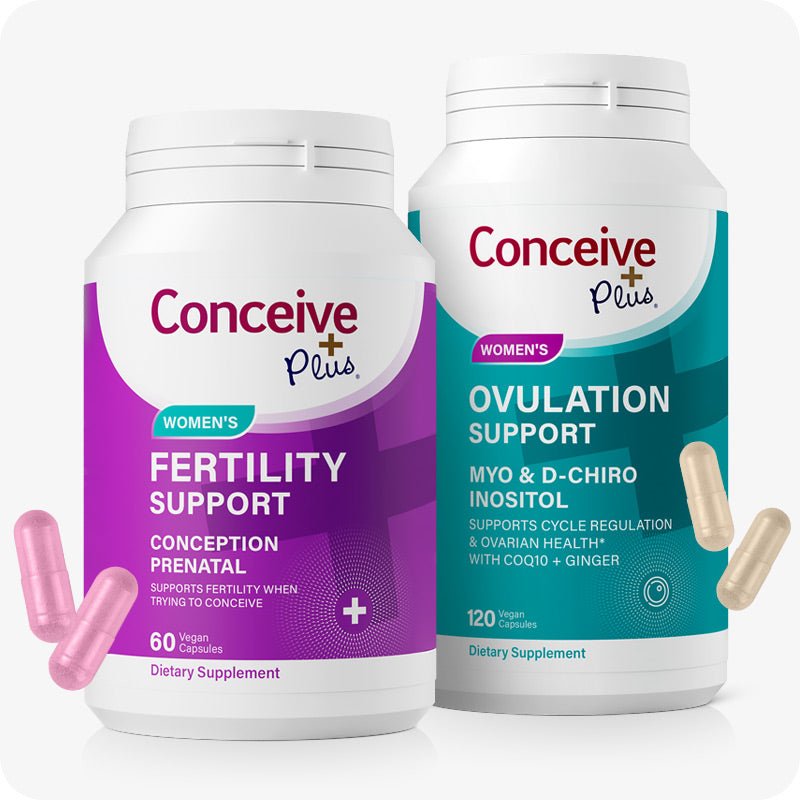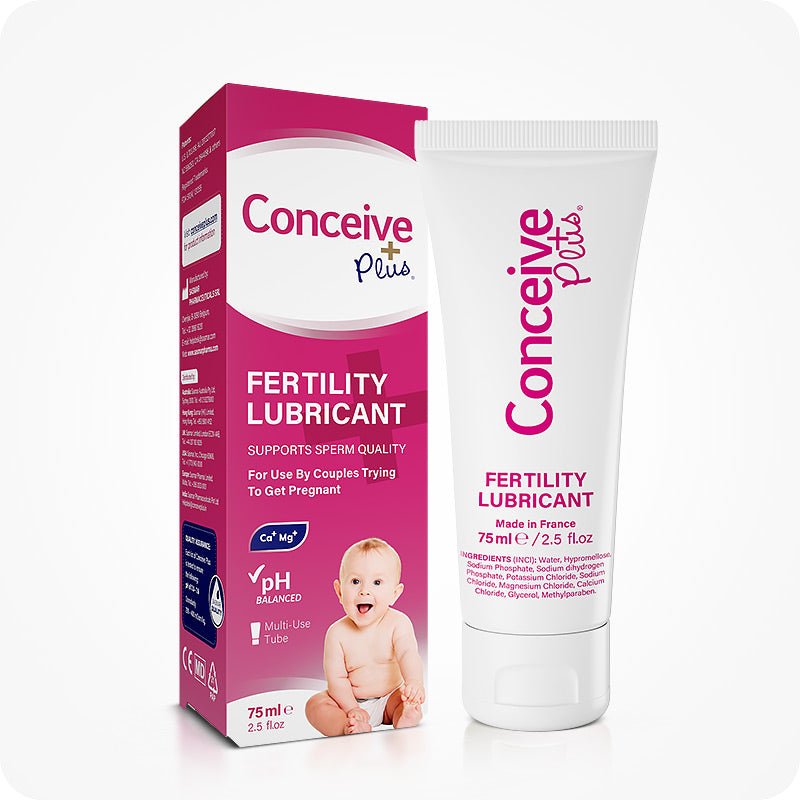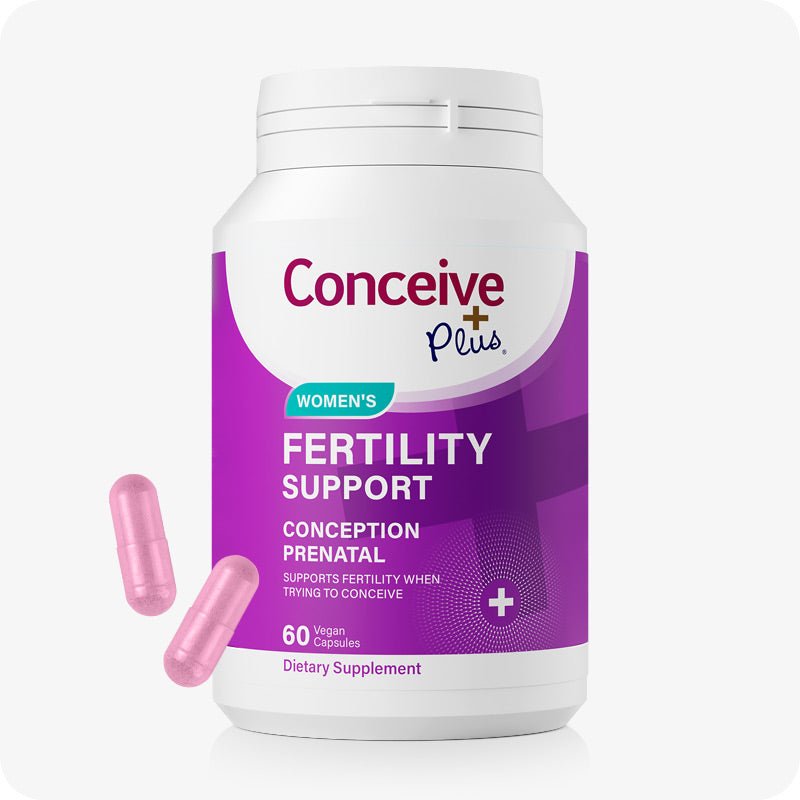Female Fertility Test: What Are the Options?
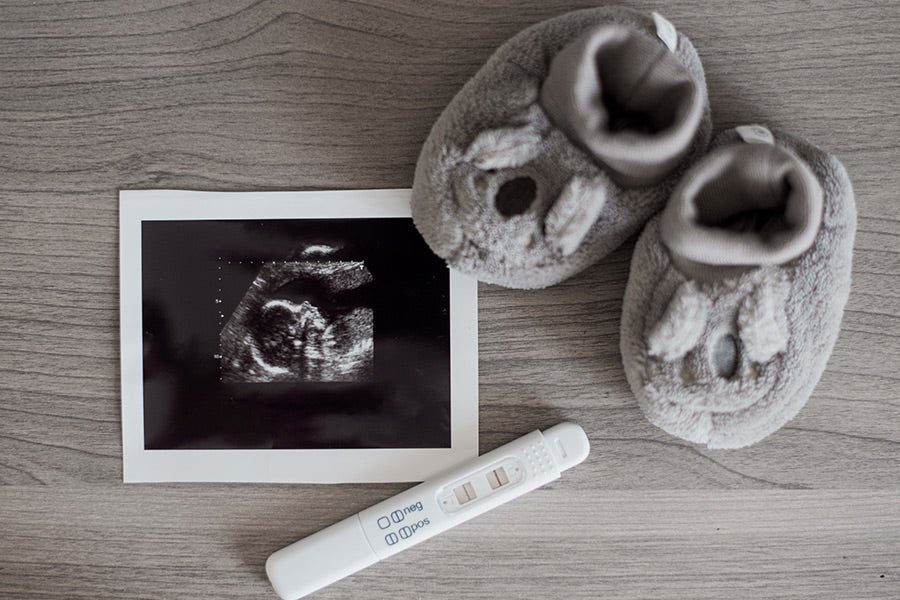
When a couple is planning to conceive, it is essential for them to understand that both male and female fertility is equally important for conception. Studies show that female infertility is the only cause behind 50% of couples who struggle to conceive [1].
This is why a woman needs to understand her fertility health and take steps to improve it. This is where fertility tests play a vital role. These tests can give valuable information to women about their fertility health and chances of conception. Different methods exist for fertility screening, ranging from professional fertility screening test to at-home fertility test kits.
In this article, we'll discuss what is a fertility test, how female fertility works, the factors that can impact fertility, and the fertility test options for women. This article also includes the role of home fertility tests and their importance in family planning.
How Female Fertility Works?
The role of the female reproductive system is to produce one egg per menstrual cycle, unlike men, who produce millions of sperm daily [2]. The female reproductive system also prepares the body for the potential pregnancy during each menstrual cycle [3]. During pregnancy, many wonder where do sperms go during pregnancy, as fertilization is no longer needed.
A woman is considered to have good fertility if her reproductive system produces healthy eggs and efficiently prepares the body for pregnancy. The menstrual cycle typically lasts 28 days and includes the following phases:
-
Follicular Phase
Ovaries contain numerous follicles with immature eggs in them. At the start of the menstrual cycle, during the follicular phase, some of these follicles stimulate the development of a mature egg under the influence of follicle-stimulating hormone FSH. Out of many mature follicles, only one follicle releases an egg during ovulation [3].
-
Ovulation
Around day 14 of the menstrual cycle, the women's body suddenly increases the release of luteinizing hormone (LH), also called LH surge [4]. This surge in LH triggers the release of egg from the follicle.
-
Luteal Phase
It is the phase when a woman's body prepares for a potential pregnancy. The uterine walls develop in this phase for the implantation of the embryo. However, if sperm cells are unavailable and fertilization doesn't occur, the uterine wall starts to shed, marking the start of the cycle.

Remember that female fertility depends on egg quality, hormone levels, and uterine health. When a woman is well informed about how these components work, she can better understand her fertility screening results.
Common Fertility Problems in Women
Different factors can negatively impact female fertility health. These include:
- Ovulation Disorders: Conditions like polycystic ovary syndrome or PCOS can disturb the normal pattern of the menstrual cycle and egg release [5]. This condition is among the common disorders responsible for female infertility.
- Blocked Fallopian Tubes: The fallopian tube receives the egg from the ovaries and is the location where fertilization occurs. Any blockage in the fallopian tube can inhibit the sperm from reaching the egg. Some common causes of blocked fallopian tubes are infections, endometriosis, or previous surgeries.
- Age: Women's fertility health doesn't remain the same throughout their lives [6]. The peak fertility age for women is between 20 and 30, and after this age, fertility health starts to decline naturally.
- Lifestyle Factors: Studies show that different lifestyle factors, such as smoking, alcohol consumption, excessive weight, or stress, can negatively impact female fertility [7].
Fertility tests for women can help in the early identification of these issues, which is important for the proper management of these fertility issues and recovery.
How to Test for Female Fertility?
How do you test fertility? There are different types of female fertility tests; some are performed only at fertility clinics or hospitals, while others can be performed at home.
In-clinic Fertility Tests
In-clinic fertility tests for women require specific tools and expertise for accurate results, so they are only performed by experts at clinics. Here are some common methods to evaluate female fertility at clinics:
- Hormonal Blood Tests: Different tests can evaluate the levels of female fertility hormones and hint at abnormal changes that can impact fertility. These include fertility hormone tests like FSH, LH, and anti müllerian hormone AMH to check ovarian reserve and egg quality.
- Fertility Blood Tests: Women often ask how fertility blood works and what it reveals. Blood test for fertility female measures AMH, FSH, and estradiol to evaluate fertility status.
- Ultrasound: Tests for infertility also include ultrasound, which can be used to count follicles and assess the uterus for any kind of damage or overgrowth.
- Hysterosalpingography (HSG): HSG is a special fert test to examine fallopian tubes for blockages.
At-Home Fertility Tests
Not everyone is comfortable visiting fertility clinics for the evaluation of fertility status. For such cases, a female fertility test at home is an option. These tests involve the use of specialized kits to measure hormones like FSH or LH using urine samples.
Some at-home fertility check for women kits can also tell about the ovarian reserve. It is important to remember that home fertility tests cannot provide as much information as clinical tests, and the chances of human error are also comparatively high.
Importance of Fertility Screening
If you are planning to conceive, fertility screening is important as it can help with:
- Identifying potential barriers to conception.
- Planning treatment if issues are detected.
- Reducing the emotional stress of unexplained infertility.
Nowadays, many women prefer fertility screening before actively trying to conceive. Knowing about conditions early through fertility trst can help improve the chances of a successful pregnancy.
How to Test for Fertility at Home?
Home fertility tests are becoming popular since they are easy to perform and also cover privacy concerns. Common home fertility tests for females include:
-
Ovulation Predictor Kits
These specially designed test kits can detect LH surges and predict ovulation. When a woman is aware of her ovulation days, she can increase her chances of conception by planning intercourse on those days. Additionally, if concerns about STIs arise, she may wonder how long after intercourse to get tested to ensure accurate results.
-
Pregnancy Detection Kits
Pregnancy detection kits check for human chorionic gonadotropin (HCG) in the urine. The presence of this hormone in the urine is an early indicator of pregnancy.
-
Basal Body Temperature (BBT)
Reports show that the basal body temperature increases on the ovulation day [8]. Women can identify their ovulation date by checking their body temperature every morning around the ovulation days.
At-home fertility tests have some limitations compared to fertility test options at clinics. For accurate diagnosis, experts recommend womens fertility test or women fertility test in a clinical setting.
Where Can You Get a Fertility Test Done?
If you are a woman wondering, "Where can I get a fertility test done?" you can visit the following locations for a detailed evaluation of your fertility health:
- Fertility Clinics
- Gynecologists
- Primary Care Doctors
These locations offer plenty of infertility test options, and experts there can also help you improve your fertility health.
How to Improve Fertility Status?
When your fertility test shows that your fertility health is not optimum, you need to look for ways to improve fertility. Here are some options for increasing female fertility:
- Healthy Lifestyle: A healthy lifestyle includes a healthy diet, regular exercise, and proper stress management. A healthy diet here refers to a diet that provides fertility nutrients to women, such as folic acid, iron, vitamin D, and omega-3 [9].
- Medical Interventions: Different medications can improve hormonal imbalance and increase the chances of conception for a woman. Similarly, some procedures like in-vitro fertilization (IVF) and intrauterine insemination (IUI) can also help women achieve conception [10].
- Ovulation Tracking: Ovulation is the time when chances of conception for a woman are maximum. Women planning to conceive must track their ovulation days and plan intercourse accordingly.
- Female Fertility Supplements: Female fertility supplements are specially formulated supplements that can enhance fertility health and increase the chances of conception. These fertility supplements provide essential vitamins and minerals for female fertility health.
The Bottom Line
If a woman is planning to conceive, she needs to have optimum fertility health. Women often ask how to check fertility or if there are any options for checking fertility at home.
Different fertility tests are available that can help women determine their fertility health and chances of conception. Some of these fertility tests can only be performed in clinics, while some fertility test kits allow you to test your fertility health at home.
Fertility testing before trying to get pregnant is crucial since it can help you determine your fertility issues on time. Expert advice and proper medical management based on your fertility test reports can help improve your fertility status and increase your chances of conception.
FAQs
-
How do doctors check if you can get pregnant?
Doctors perform different types of fertility tests using your blood or urine to determine your fertility health and chances of getting pregnant. These tests include blood work, ultrasounds, and HSG.
-
How to test fertility?
A fertility test is a specially formulated test that evaluates different aspects of fertility health. For example, fertility tests can measure the status of your fertility hormones and structure of reproductive organs.
-
How to check for infertility?
Fertility tests can help you identify whether you are fertile or infertile. You can consult a fertility specialist for comprehensive testing.
-
How to test if a woman is infertile at home?
With the help of home fertility tests, a woman can get valuable insights about her fertility health. It is also recommended to consult a specialist for better understanding of your at-home fertility test reports.
Resources Used
- Guerri, G., Maniscalchi, T., Barati, S., Gerli, S., Di Renzo, G. C., Della Morte, C., Marceddu, G., Casadei, A., Laganà, A. S., Sturla, D., Ghezzi, F., Garzon, S., Unfer, V., & Bertelli, M. (2019). Non-syndromic monogenic female infertility. Acta bio-medica : Atenei Parmensis, 90(10-S), 68–74. https://doi.org/10.23750/abm.v90i10-S.8763
- Professional, C. C. M. (2024ad, November 7). Female Reproductive System. Cleveland Clinic. https://my.clevelandclinic.org/health/articles/9118-female-reproductive-system
- Thiyagarajan, D. K., Basit, H., & Jeanmonod, R. (2024e, September 27). Physiology, Menstrual Cycle. StatPearls - NCBI Bookshelf. https://www.ncbi.nlm.nih.gov/books/NBK500020/
- Demir, A., Hero, M., Alfthan, H., Passioni, A., Tapanainen, J. S., & Stenman, U. H. (2022). Identification of the LH surge by measuring intact and total immunoreactivity in urine for prediction of ovulation time. Hormones (Athens, Greece), 21(3), 413–420. https://doi.org/10.1007/s42000-022-00368-9
- Singh, S., Pal, N., Shubham, S., Sarma, D. K., Verma, V., Marotta, F., & Kumar, M. (2023). Polycystic Ovary Syndrome: Etiology, Current Management, and Future Therapeutics. Journal of clinical medicine, 12(4), 1454. https://doi.org/10.3390/jcm12041454
- George, K., & Kamath, M. S. (2010). Fertility and age. Journal of Human Reproductive Sciences, 3(3), 121. https://doi.org/10.4103/0974-1208.74152
- Emokpae, M. A., & Brown, S. I. (2021). Effects of lifestyle factors on fertility: Practical recommendations for modification. Reproduction & Fertility, 2(1), R13. https://doi.org/10.1530/RAF-20-0046
- Steward, K., & Raja, A. (2023b, July 17). Physiology, Ovulation And Basal Body Temperature. StatPearls - NCBI Bookshelf. https://www.ncbi.nlm.nih.gov/books/NBK546686/
- Skoracka, K., Ratajczak, A. E., Rychter, A. M., Dobrowolska, A., & Krela-Kaźmierczak, I. (2021). Female Fertility and the Nutritional Approach: The Most Essential Aspects. Advances in Nutrition, 12(6), 2372. https://doi.org/10.1093/advances/nmab068
- Clinic, C. (2024a, September 24). What’s the Difference Between IVF and IUI? Cleveland Clinic. https://health.clevelandclinic.org/iui-vs-ivf





